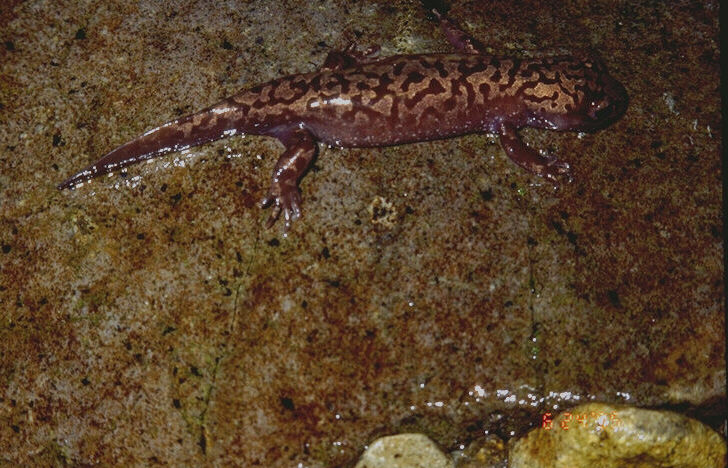
This metamorphosed individual shows the marbling pattern common to this species. A few metamorphosed individuals do not show this pattern.
Photographed by Matthew G. Hunter ..... Date: 6/24/95 ..... Photo: AAG-006
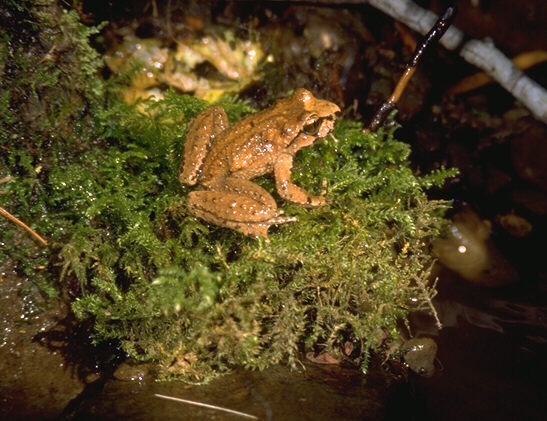
Tailed frogs vary tremendously in color. This tan individual in one of few in this area.
Photographed by Matthew G. Hunter ..... Date: 9/14/95 ..... Photo: AAG-042

While most tailed frog tadpoles are solid black with a white tip to the tail, a few individuals show this more pale, mottled pattern.
Photographed by Matthew G. Hunter ..... Date: 8/10/95 ..... Photo: AAG-043
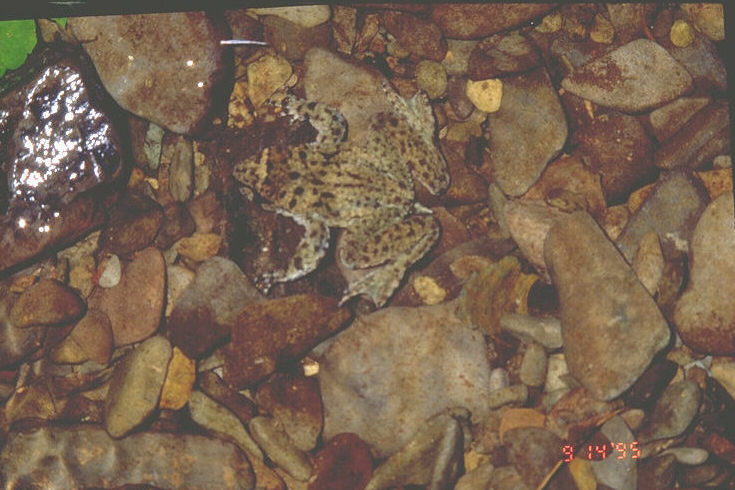
Individual tailed frogs can change their color or pattern to some degree. This individual is currently showing a rather spotted pattern.
Photographed by Matthew G. Hunter ..... Date: 9/14/95 ..... Photo: AAG-047

The gills and tail fin can be seen on this medium-sized larva. The dull, brown, suttle mottled pattern is common in larvae of this species. Some show more striking mottling, and some are nearly solid colored.
Photographed by Matthew G. Hunter ..... Date: 8/24/95 ..... Photo: AAG-008
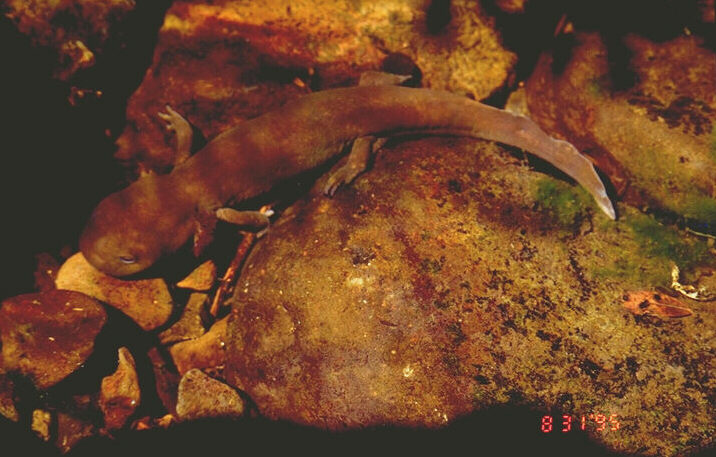
Most Pacific giant salamanders grow for 1-3 years before metamorphosing. Some individuals do not metamorphose, but become reproductively mature while retaining larval characteristics. These individuals are called neotenes. This individual is about 240 mm in total length, and is most likely neotenic.
Photographed by Matthew G. Hunter ..... Date: 8/31/95 ..... Photo: AAG-012
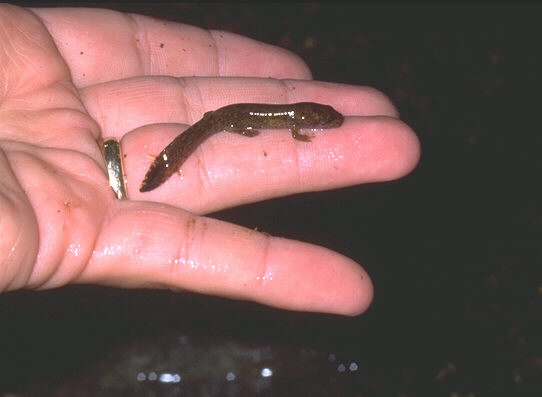
This small larva hatched from an egg less than a year prior to this photo. It will grow for one or two years more before metamorphosing, or becoming neotenic.
Photographed by Matthew G. Hunter ..... Date: 6/24/95 ..... Photo: AAG-013
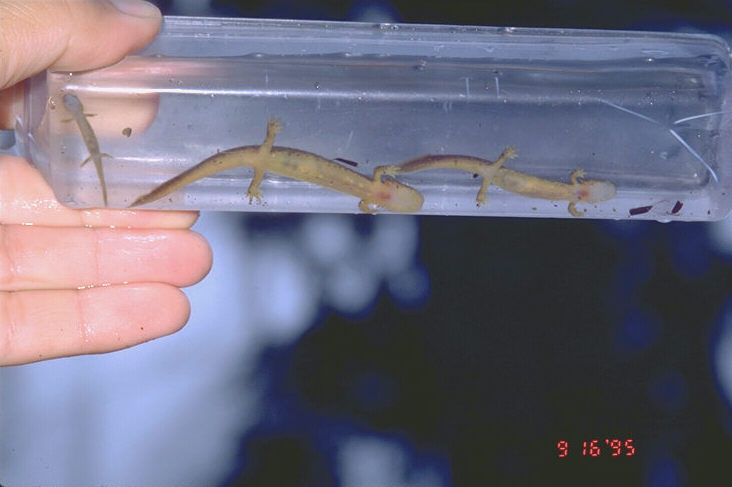
Torrent salamanders grow as larvae for 3 or more years before metamorphosing. This set of larvae show three sizes that likely represent three age classes.
Photographed by Matthew G. Hunter ..... Date: 9/16/95 ..... Photo: AAG-017

This group of torrent salamanders are all at maximum reported sizes for larvae of this species. Note the smooth lemon-yellow coloration underneath, only slight spotting on the lower sides, and the reddish gills between the head and front legs.
Photographed by Matthew G. Hunter ..... Date: 9/14/95 ..... Photo: AAG-018
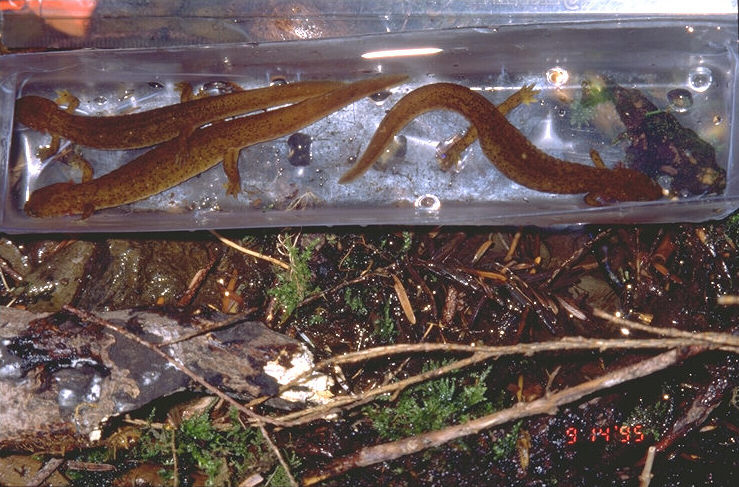
These individuals are the same as those in photo 18. Note the dull brown sand-grain pattern on top, and the stout, attenuated tail.
Photographed by Matthew G. Hunter ..... Date: 9/14/95 ..... Photo: AAG-019
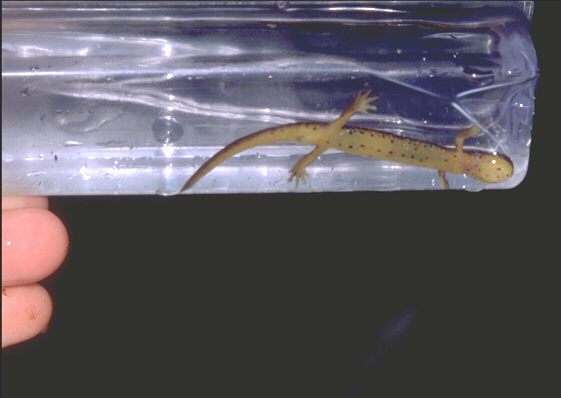
The underside of this adult shows the characteristic spotted pattern of the Cascade torrent salamander. The spotting can be even more heavy than this.
Photographed by Matthew G. Hunter ..... Date: 8/23/95 ..... Photo: AAG-020
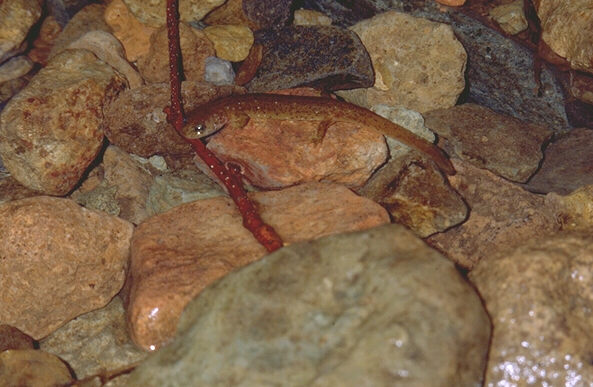
This larvae is shown in typical pebble and cobble substrate with abundant interstitial space.
Photographed by Matthew G. Hunter ..... Date: 9/11/95 ..... Photo: AAG-023